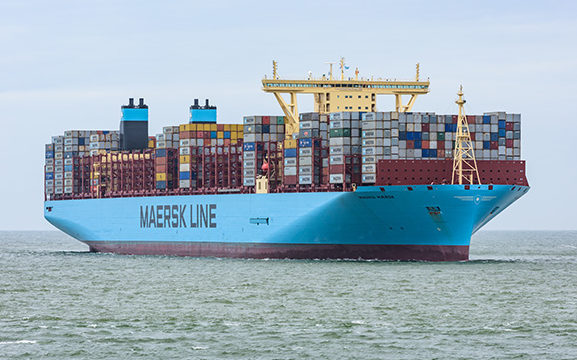
Maersk plans to install hundreds of offshore charging stations around the world to allow vessels to power themselves with electricity instead of fossil fuels while waiting outside ports, it said on Tuesday.
Maersk is aiming to limit carbon emissions and cut air pollution from the around 3,500 commercial vessels that each day consume fuel oil to generate power while laying idle at ports around the world.
Congestion and bottlenecks at major ports like Shanghai, Rotterdam or Los Angeles during the pandemic due to lack of labour and growing import demand have resulted in more toxic exhaust fumes from ships waiting to discharge, causing health problems for nearby urban areas.
Stillstrom, a new company owned by Maersk’s offshore marine service division, has developed technology that will allow vessels to charge while moored to a buoy connected to land via a transmission line.
The group aims to install between three and 10 buoys at up 100 ports by 2028, which will cut carbon emissions by 5 million tonnes a year while reducing air and noise pollution, Stillstrom manager Sebastian Klasterer Toft said.
“We know that air pollution is a big problem at ports near urban areas, and these buoys will allow ships to turn off their engines,” Toft said. “Our ambition is that ships should use green power instead of fossil fuels while laying idle at ports.”
The first such buoy operating at commercial scale will be installed between July and September this year at an offshore wind farm operated by Orsted.
Tests will be conducted for six to nine months, followed by a commercial roll-out at between 50 and 100 ports by 2028, Maersk said. The company is already in talks with several ports around the world.
Coaster vessels consume three to five tonnes of shipping fuel a day while idle, and the largest commercial vessels such as container ships consume up to 10 tonnes, according to Maersk.